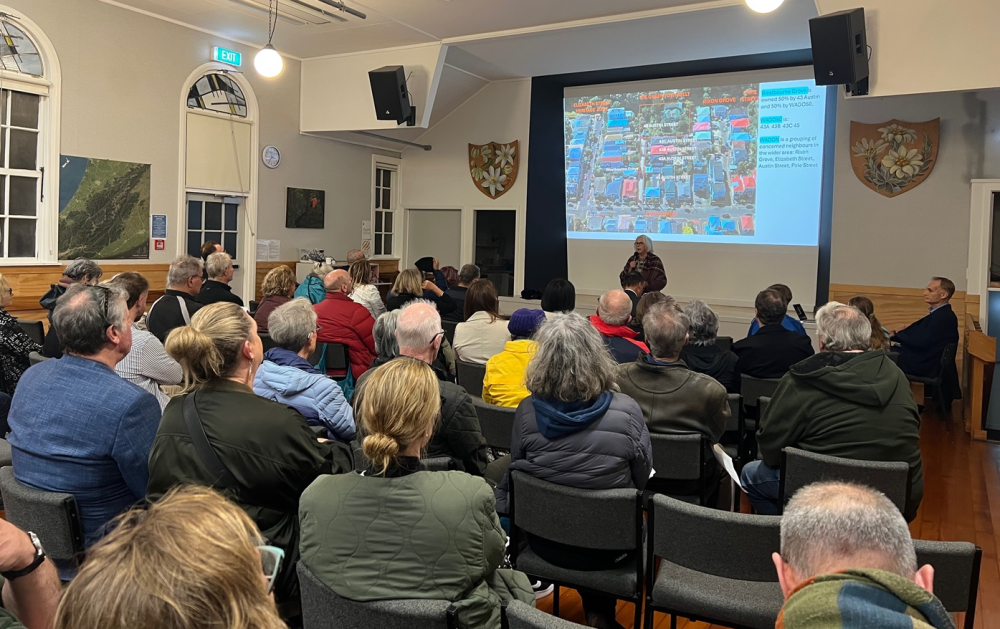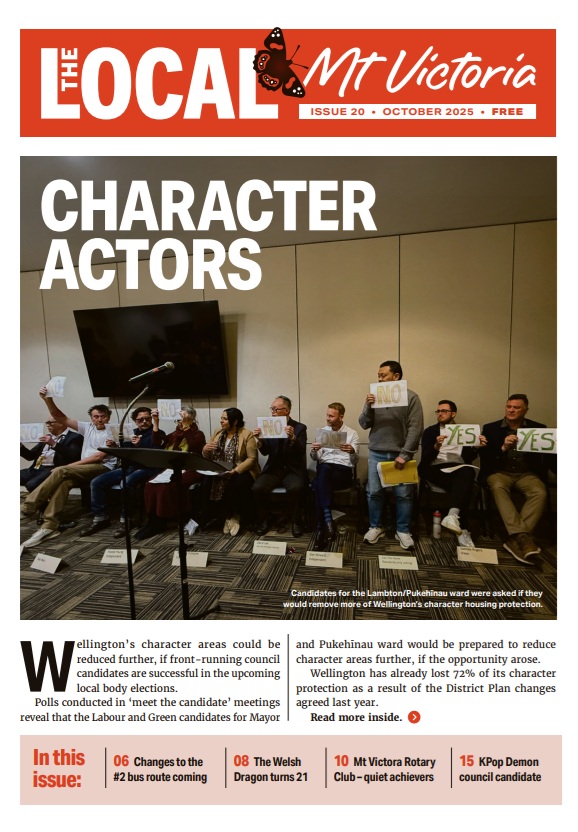
A lively public meeting regarding the proposed Mayfair apartment block has fired up opponents of the development, who are now looking for political support for their cause. Jane O’Loughlin was there.
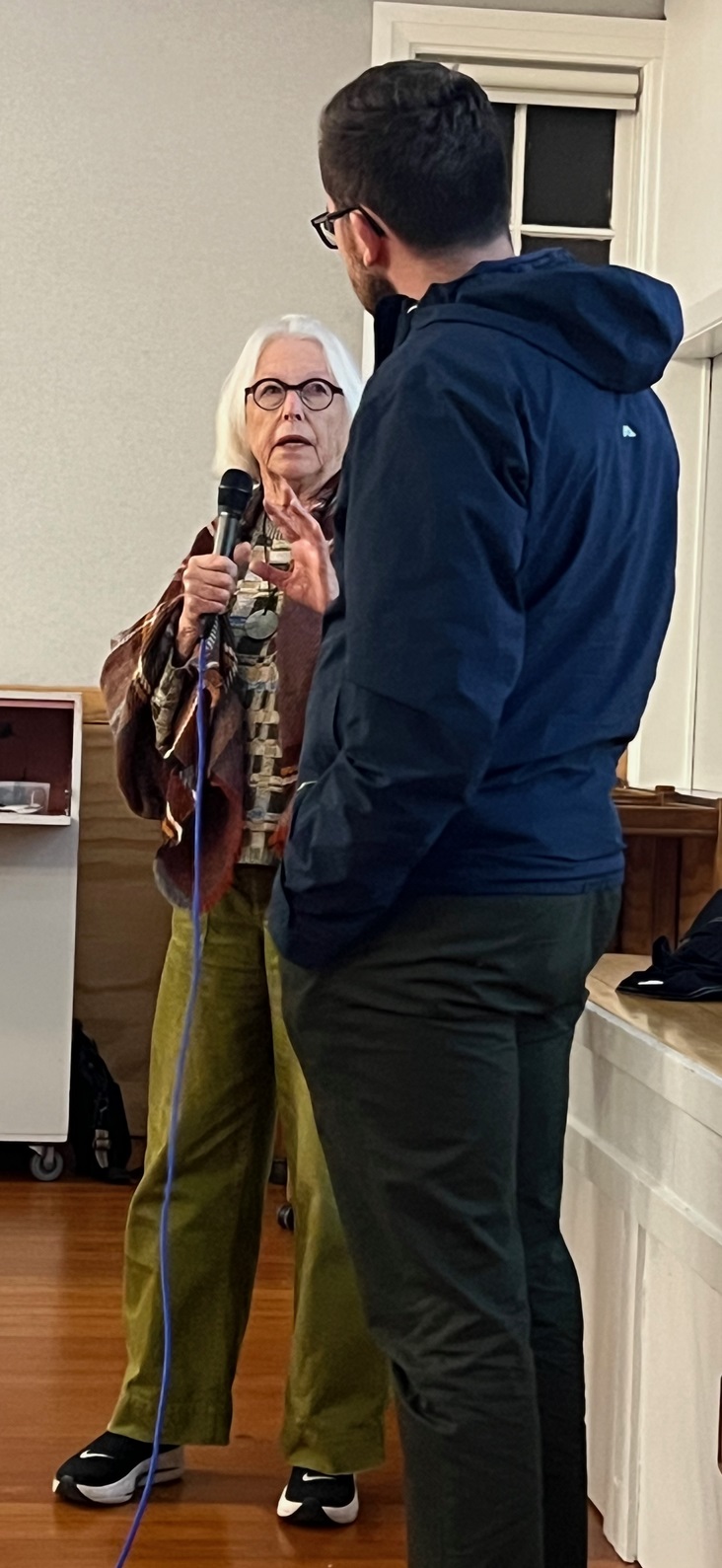
A fiery public meeting in May has galvanized opponents of a seven-storey apartment block proposed for Austin Street in Mt Victoria.
Councillors, aspiring politicians and local residents were among the more than 80 people that attended the May meeting at the Tararua Tramping Club, which was led and moderated by Dame Gaylene Preston, an Austin Street resident.
The proposed ‘Mayfair’ development comprises 32 apartments, including five sub-penthouses and three penthouses, and is aimed at the high end of the market.
However neighbours are unhappy with the location and lack of consultation.
Speakers included Ralph Highnam and Willy Trolove who both live in Westbourne Grove, and Mt Victoria resident Phil Kelliher, who showed aerial footage of the existing Westbourne house, to demonstrate the prominence of the site. The meeting was told that developer Mark Quinn had turned down the invitation to attend.
All three Lambton/Pukehīnau city councillors attended the meeting, along with councillor Ray Chung and a number of council hopefuls.
In a colourful talk, Trolove said that ‘appropriately’ the Mayfair shared its name with a former Wellington high-end brothel, ‘where those with the best intensions were led astray,’ and that the Mayfair would ‘loom over the neighbourhood like Sauron’s dark tower.’
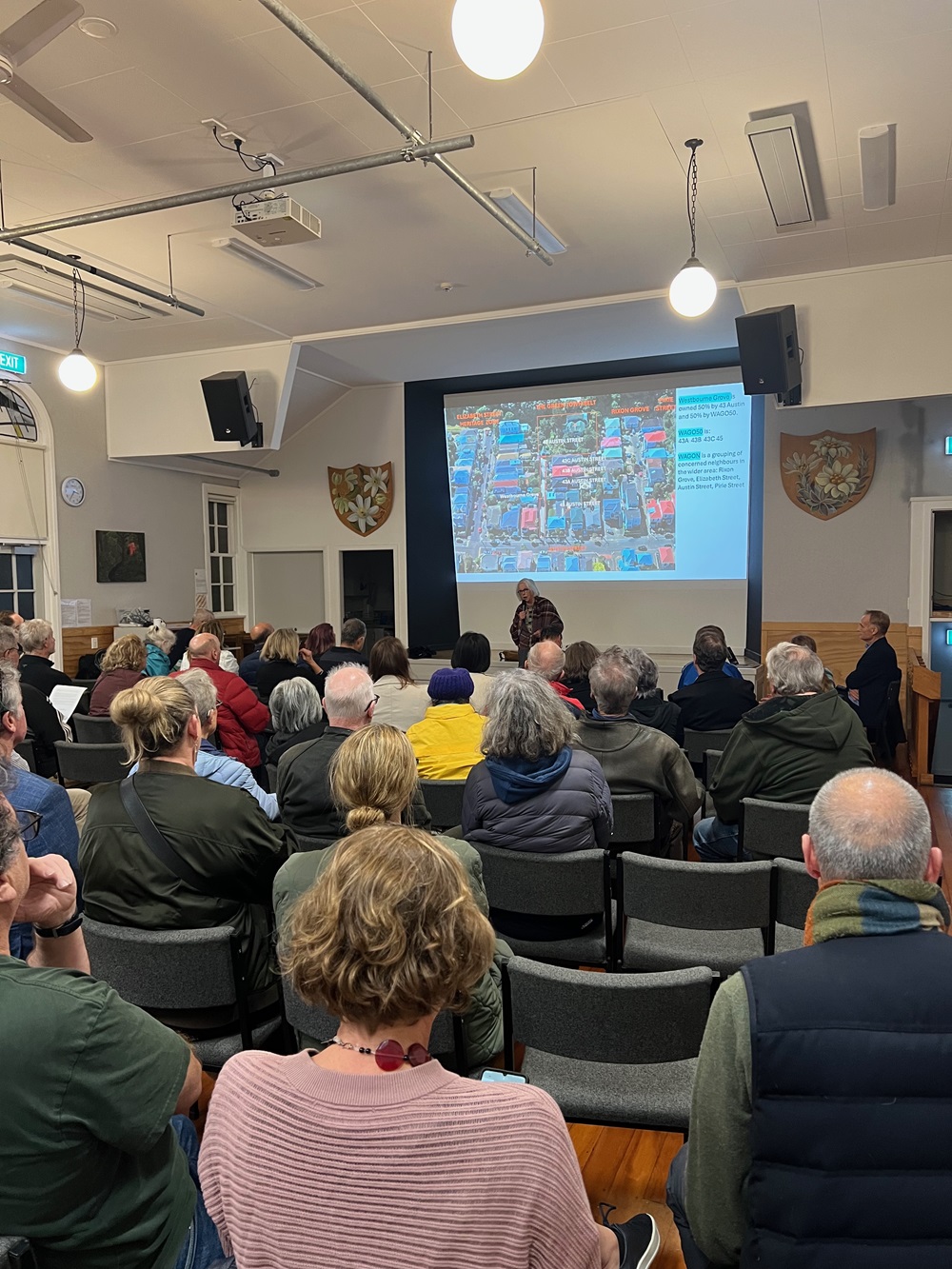
He told the crowd that the resource consent application showed that the footpath would be removed and there would be 72 truck movements every day for the first six weeks of the construction. “So it’s not a small thing. It’s a really, really big thing.”
He criticised councillors that that brought the District Plan in on the basis of sustainable development. “Sustainable development? Five thousand, two hundred cubic metres of our mountain dug out and carted off for an underground parking garage.”
High density housing within a ‘walkable catchment’ of the city was supposed to mean residents would walk and cycle, but the Mayfair would lead to 30 extra carparks in the area.
Councillor Iona Pannett said she had not voted for the higher density rules brought in by the District Plan that encouraged six-storey developments, and did not think the multi-million dollar apartment block belonged in the suburb. “We are not a wealthy suburb.”
Although no council staff attended the meeting, Pannett explained the process for notification on their behalf. If the project received limited or full public notification, a commissioner would be appointed to receive submissions.
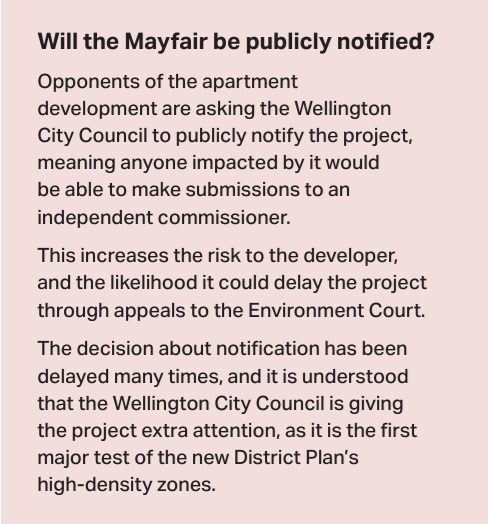 The council along with the applicant would provide their assessments, and the commissioner would decide the outcome.
The council along with the applicant would provide their assessments, and the commissioner would decide the outcome.
Pannett said if the residents were unhappy with the outcome they had further legal options, such as challenging the decision in the High Court, or Environment Court, however these could be expensive.
Based on her discussions with the council staff, she believed the consent would receive limited notification.
City councillor and mayoral prospect Ray Chung said he opposed the apartment block as it did not fit with the neighbourhood, and there were other more suitable places.
He also questioned whether more housing was needed, noting that Wellington was the only metropolitan area in New Zealand where the population was dropping. “Don’t sit still and allow this to happen.”
Green Party councillor Geordie Rogers acknowledged he did vote for the District Plan changes but was concerned about specific aspects of the proposal, such as the loss of the footpath, and the increase in car parks, encouraging more cars.
Several members of the audience questioned why the development could go ahead, given the developer owned only half shared in the private road. Some suggested that disruptive actions could be used to delay the construction process.
Highnam said that the legal advice he had received was that no changes could be made to the driveway without the permission of the other owners who lived along it and therefore the owners wondered “how come the developer is not even talking to us in any significant reasonable way.”
Kate, a resident of Rixon Grove said she was a support of sustainable transport and housing equality but “none of these things are represented by this housing development”.
“My neighbours in Rixon Grove are going to be living in the shadow of three-million-dollar penthouses.”
OTHER STORIES


